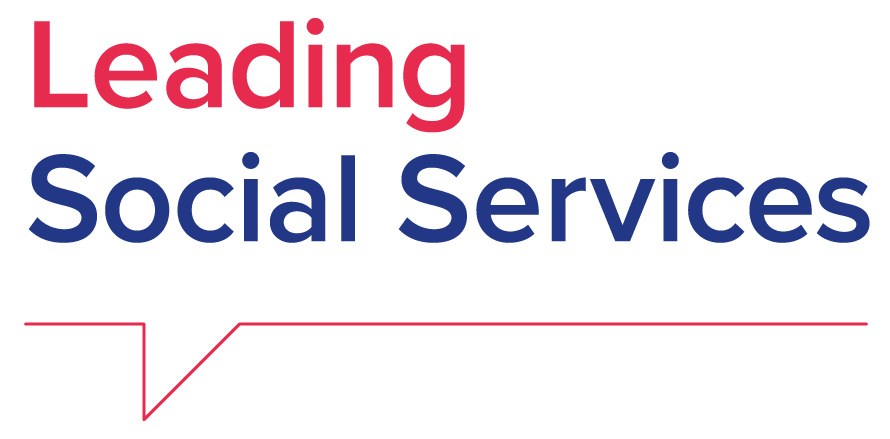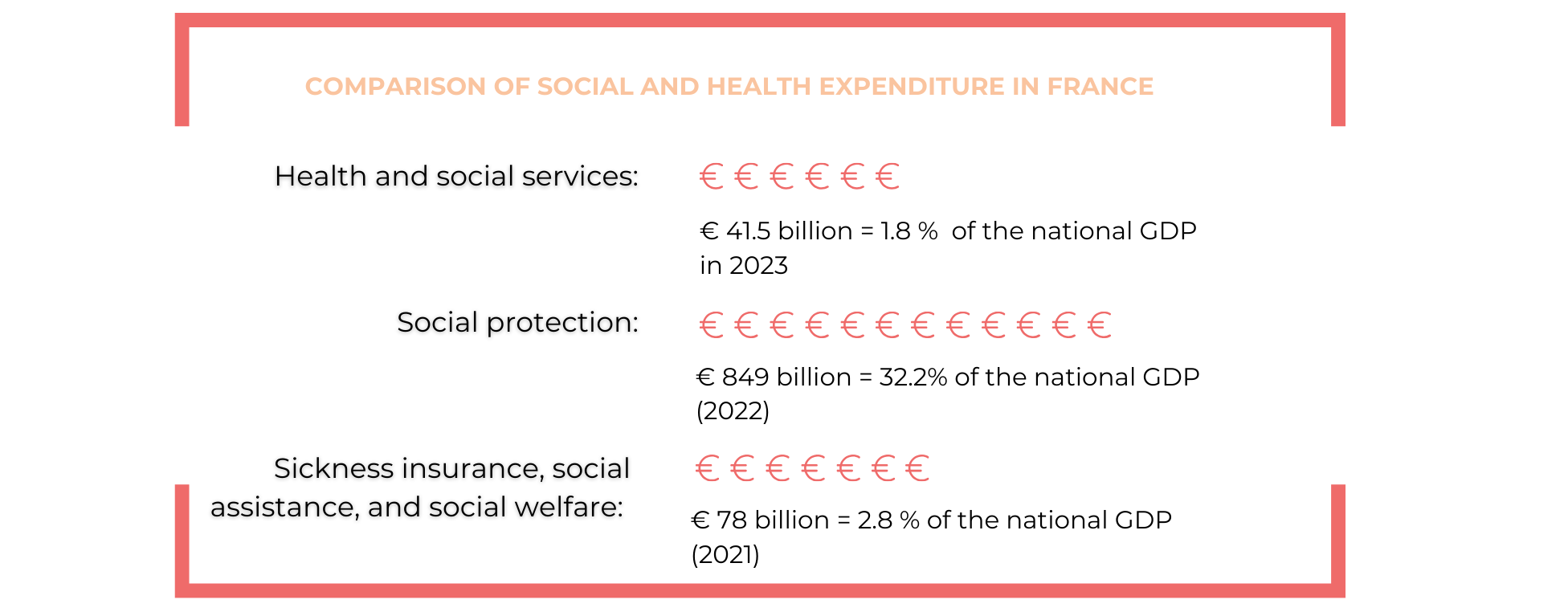RECOMMENDATION
Strengthen the prevention and early warning systems for people at risk of poverty and social exclusion, especially for children in vulnerable situations.
SOCIAL SERVICES LEGAL AND POLICY FRAMEWORK
Right to access social services ✅
Access to social services for residents is recognised by the NOTRe (New Territorial Organisation of the Republic) Act of 7 August 2015 (art. 98)
Definition of social services ✅
Social services are defined in paragraph L. 312-1 of the Code of Social Action and Families. They include services such as early health and social services centres for children with disabilities, child protection services, professional readaptation, counselling and retraining, care homes and home care services for older people and people with disabilities and emergency shelters and support services for families with difficulties. The full list is available under law L. 312-1 of the Code of Social Action and Families.
National catalogue of social services ✅
The law 2002-2 of 2 January 2002 revamping social and medico-social actions has a similar function to that of a social services catalogue. It defines the missions of services and agencies, the types of benefits and services, and agencies involved in social assistance for children, disability, older people, integration, and others.
Strategic plan for social services ❌
There is no social services strategic plan at the national level. However, each county council (département in French) must establish a scheme that defines health and social services, their operation, distribution in the territory, and their goals, according to the law 2002-2 of 2 January 2002 previously mentioned.
Responsibilities of national/ regional/ local Authorities 🤝
Responsibilities for social protection services are defined in law 2002-2 of 2 January 2002 and NOTRe (New Territorial Organisation of the Republic) Act of 7 August 2015 (art. 98).
According to these laws, social protection is primarily overseen by the National Social Security System, while social services are the responsibility of county councils.
Municipalities are not responsible for social assistance unless county councils delegate their responsibilities. However, municipalities carry specific obligations such as the assessment of applications for social assistance (except for children) and forwarding them to the appropriate body, providing housing for social assistance applicants, conducting a social needs analysis (ABS) for the population of the municipality, and maintaining an updated register of residents receiving statutory and non-statutory social assistance.
SOCIAL SERVICES EXPENDITURE
COVERAGE
Workforce
31,900 social workers and educators are employed by the public sector. These are 47 per 100,000 inhabitants.
Source: DREES, 2022
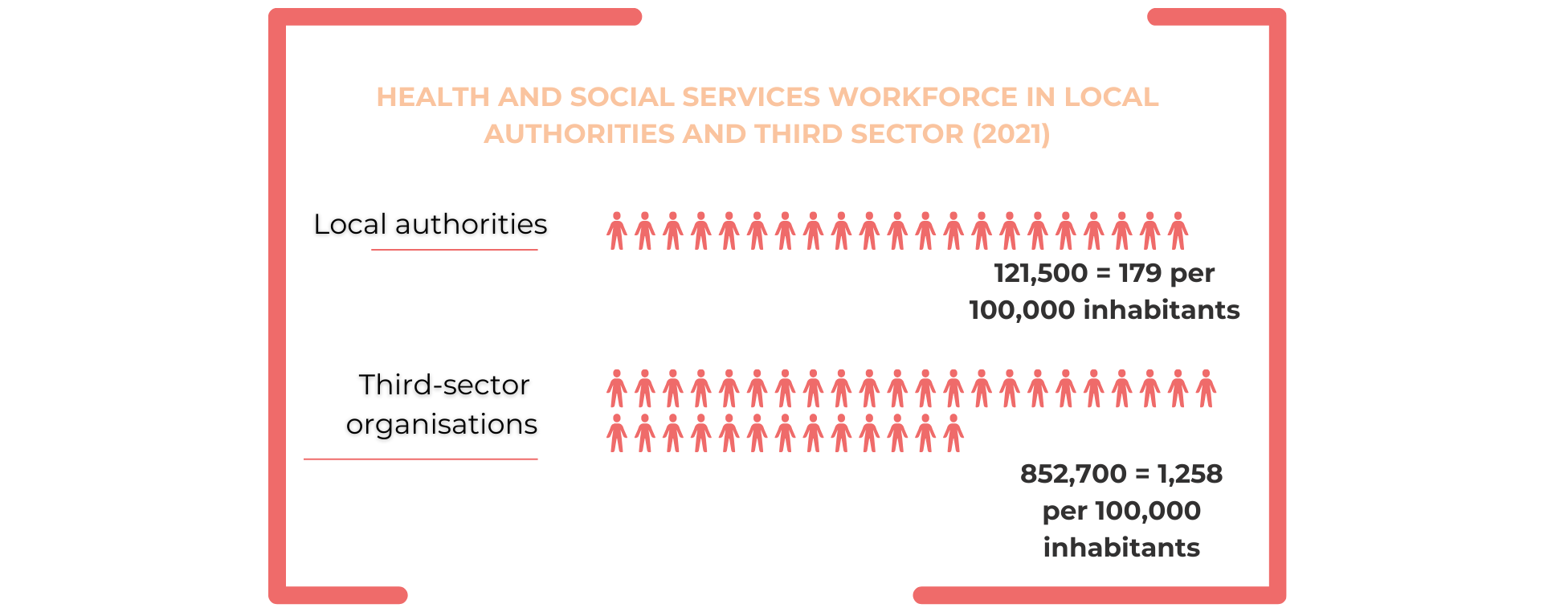
Source: DREES, 2021
36,200 people were employed as foster parents by departmental councils in 2021. This means 53 foster parents per 100,000 inhabitants
Source: DREES, 2022
Long-term care (LTC) for older people
- Number of older people aged 65+: 13,9 million (2020) = 21 % of the total population
Source: Insee, 2020
2. Number of older people with LTC needs: 1.3 million people aged 60+ (2021) / 9 % of the population aged 65+
Source: DREES, 2022
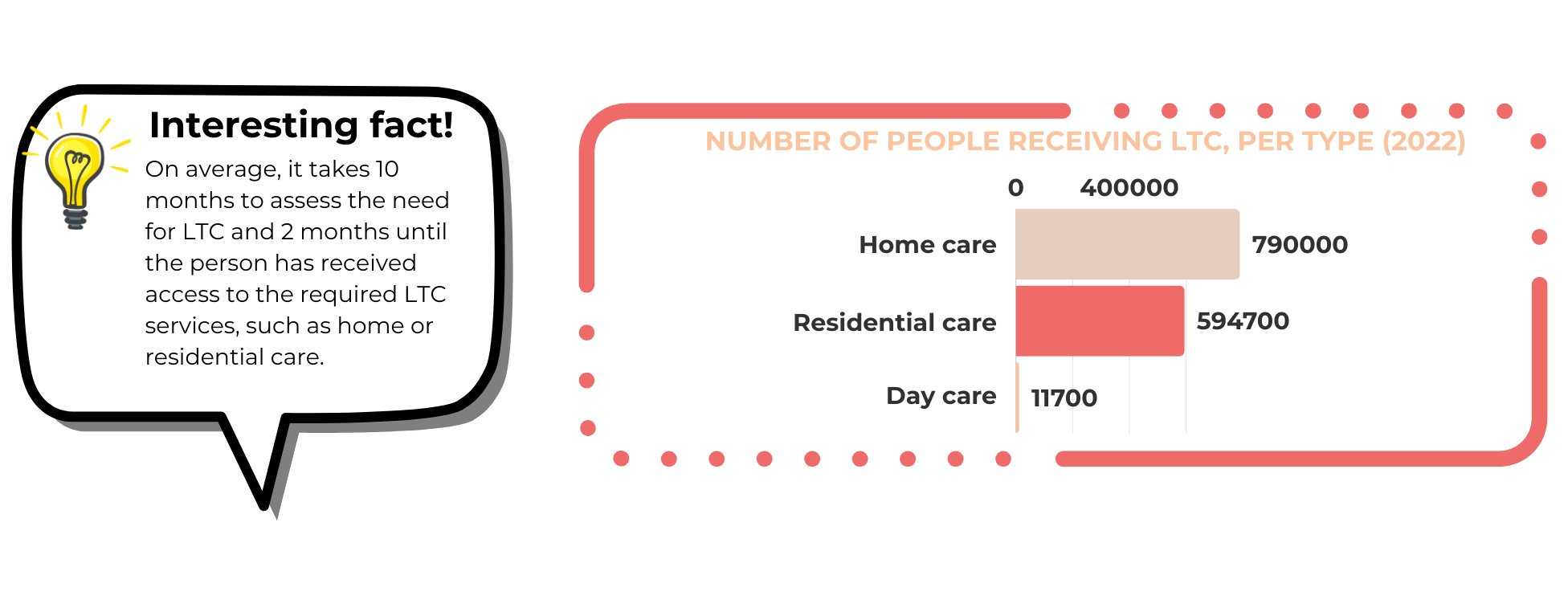
Source: National Solidarity Fund for Autonomy, 2022
Long-term care (LTC) for people with disabilities (PWD)
Statistics from 2021:
- Number of PWD: 6.8 million older than 15 years / 10 % of the total population
- Number of PWD 3.3 million older than between 16 and 60 years
- Number of PWD assessed in need of LTC: 311,700 / 4.6 % of people with disabilities aged older than 15
Source: DREES, 2021
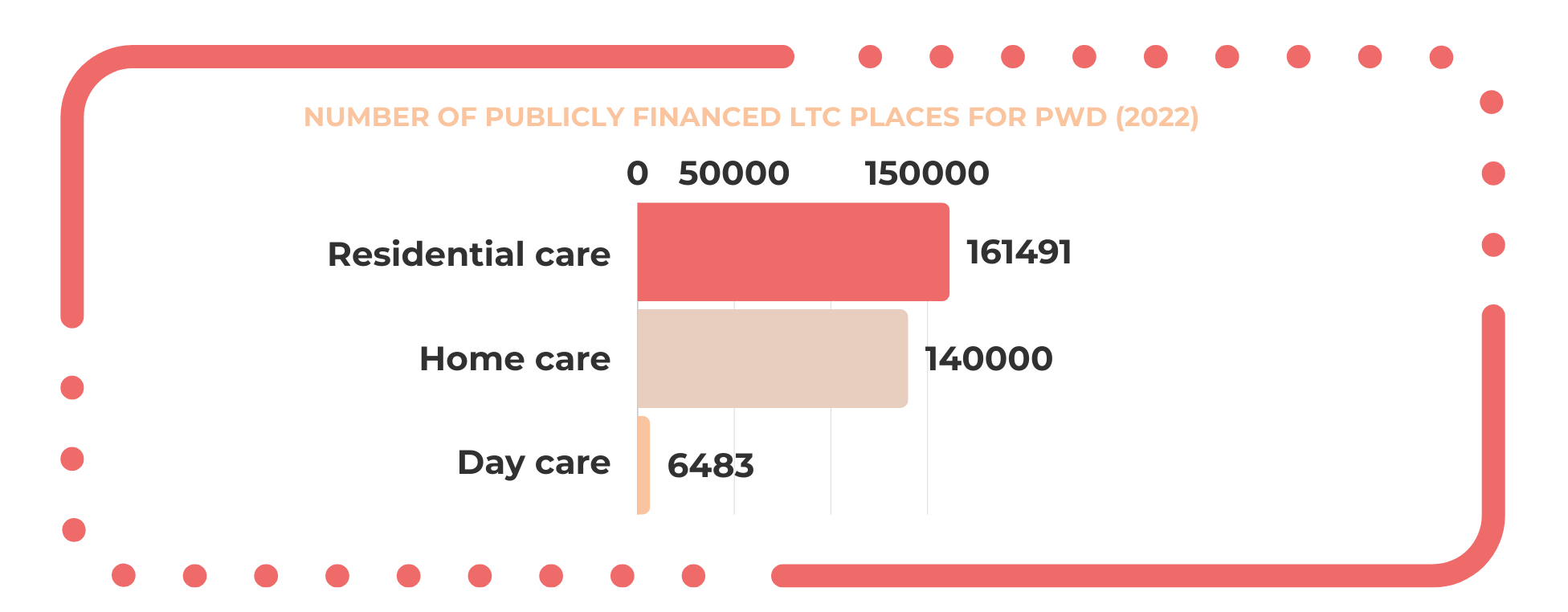
Source: National Solidarity Fund for Autonomy, 2022
Child protection services
146,900 children were placed in alternative care in 2022
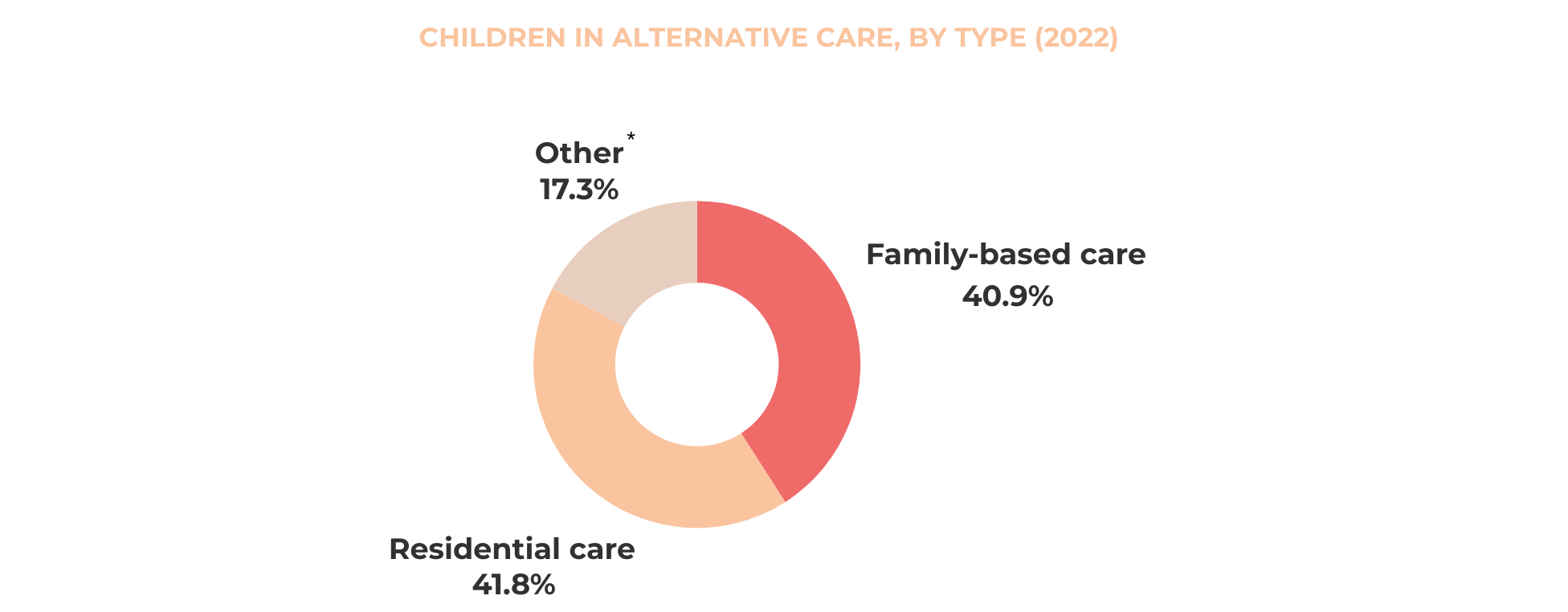
* This includes young people (until 16 years old) supported by health and social care facilities for children or adolescents who have been allocated a child protection measure
Source: DREES, 2022
Women’s support
244,000 women fell victim to domestic violence, which is 0.7 % of the female population and 360 cases per 100,000 inhabitants
11,000 places exist in centres for women victims of domestic violence. This means 16 places per 100,000 inhabitants
Source: National Observatory on Violence Against Women / Internal Statistics, 2022
Homelessness and social housing
145,000 accommodation places were available for homeless people in 2021. This means 214 per 100,000 inhabitants
2,4 million people were on waiting lists for social housing 2023
104,800 social housing apartments were built in 2022
Source: DREES, 2022

Source: Ministry of Ecological Transition and Territorial Cohesion, 2022

